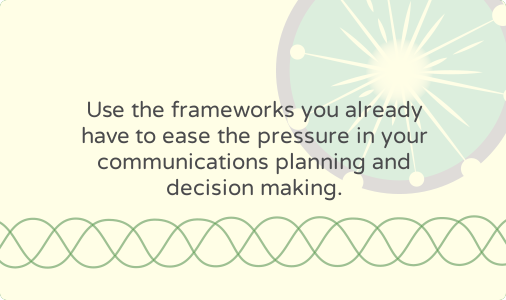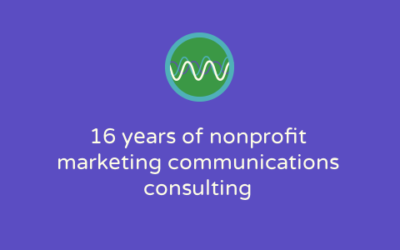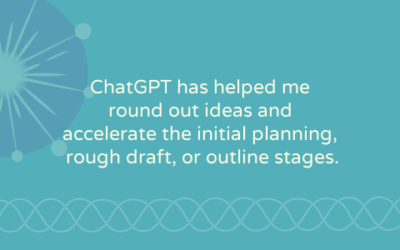Are your marketing communications directly connected to your organization’s strategic plan?
In my work with nonprofit leaders and communicators, we often need to start by returning to the basics. I ask for a copy of their organization’s strategic plan to connect the current project with overarching priorities. Sometimes the strategic plan is readily available, sometimes it takes some digging, and sometimes it “exists in someone’s head.” Very often, it has not been referred to in a long time.
Strategic alignment can get lost amidst the pressure to “produce” and keep up with internal and external demands. For example, the COVID-19 pandemic has pushed many communicators into relentless reactive and production mode. For more than a decade before that, working in communications has meant keeping up with constantly changing tools, channels, platforms, and technologies. After years of innovating, experimenting and adapting, your messaging and communications might have become disconnected from an overarching plan.
Are your nonprofit’s communications strategically aligned? Reasons to rely on your organization's strategic plan Click To TweetNonprofit communications as a strategic function
A consistent focus on strategic alignment is precisely what many nonprofit communicators need. Constantly being in reactive mode is exhausting. Starting creative projects from scratch each time is exhausting. These pressures are alleviated when you have a guide and framework for making individual marketing communications decisions.
Your primary framework should be your organization’s strategic plan because it holds information about your organization’s priorities, key stakeholder groups and desired outcomes. Your strategic plan will help you prioritize, determine specific goals, work toward them, and measure and evaluate success. The information in your strategic plan will also help you determine what not to do.
In addition to your strategic plan (and if you don’t have one), you might be able to tap into departmental plans such as fundraising, advocacy, research, program, and other plans that operationalize strategic priorities. What does your organization have in place to guide your current projects?
Use existing strategies and frameworks to guide communications planning and decision-making
When starting a new marketing communications project, strategic alignment can be as simple as asking yourself (and your colleagues) questions like:
- Why is this tactic important?
- Why now?
- What are we trying to achieve?
- What strategic priority does this tactic support?
When I pose these fundamental questions to the nonprofit communicators and leaders I work with, the answers don’t always come easily. However, their organizations usually have forgotten or underused frameworks that hold the answers. Here are a couple of examples from recent website content strategy projects:
Framework example 1: Strategic plan + fundraising strategy
I recently worked with a fundraising team within a large, complex organization (with a large, complex website) to improve their website content. As we explored how to balance the wishes of multiple fund development team members — representing individual giving, major gifts, capital campaigns, and events — each person was advocating for a piece of website “real estate” and their personal website content wishes.
We discovered that the organization’s strategic plan and fundraising strategy already held the answers we needed because they laid out priority stakeholder groups and approaches for the next few years. We used both strategies to clarify the role of the website in supporting fundraising and guide our website decisions.
Framework example 2: Advocacy priorities
In another case, I was helping to plan website content for a much smaller, very nimble grassroots organization that operates without a strategic plan. Their website was old, updates had been made on an ad hoc basis over many years, and they needed a new site that showcased their impressive work and impact.
Though this organization doesn’t have a strategic plan, its work is aligned around a few key, long-term advocacy priorities that have been in place for several years. We used these documented priorities (and a few others around membership and fundraising) to make decisions about website content prominence, hierarchy and gaps to fill.
Do you need to return to strategic alignment?
If you’ve let strategic alignment slip, you are certainly not alone — but return to it to ensure that communications is a strategic function at your nonprofit organization.
If you have a strategic plan, are you using it? If it’s “collecting dust,” why is that? If relevant and valuable frameworks have been underused or forgotten, dust them off and use them as planning and decision guides. If you need help, I highly recommend Nathalie Noël’s post on the Nonprofit MarCommunity blog: How to create communications objectives from nonprofit strategic goals. In the post, Nathalie walks through the steps of creating a communications plan that is an extension of your organization’s strategic plan.
Using your strategic plan as a framework and guide will position communications as the strategic function it should be. You will alleviate pressure in your communications planning and decision-making. You’ll move communications away from being a tactic-delivery department and wisely use valuable time and resources. And you’ll enjoy the confidence that comes from knowing that your efforts directly link to and support your organization’s priorities.
Use the strategies and frameworks you already have to alleviate pressure in your communications planning and decision making. #NPMC Click To Tweet



![Brand messaging that guides more than communications [case study]](https://moflow.ca/wp-content/uploads/2023/03/nonprofit-brand-messaging-case-study-400x250.png)